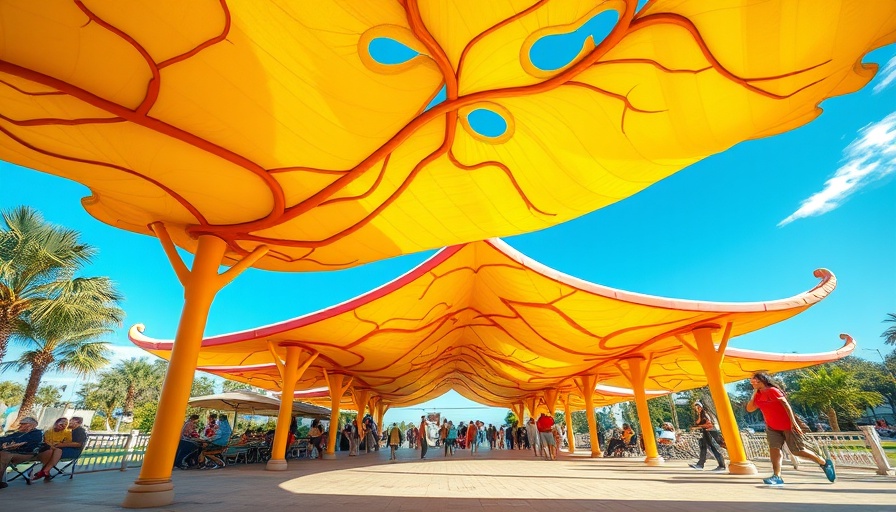
Creating Comfortable Remote Workspaces: Lessons from I/Thee's Puddle Pavilion
In a remarkable blend of architecture and nature, the I/Thee design studio has unveiled the Puddle Pavilion in Bondurant, Iowa. This unique structure, described as a 'frozen river in the sky,' showcases the innovative use of algae-based bio-resin, engaging visitors with its serene waterside setting. For digital nomads, this pavilion serves not only as a aesthetic masterpiece but also as a source of inspiration for designing comfortable and efficient remote workspaces.
Embracing Nature in Workspace Design
The Puddle Pavilion boasts a free-form canopy that allows organic shapes to emerge, resembling actual puddles that react to environmental factors, such as gravity and wind. This concept contrasts sharply with traditional workspace designs that often follow strict, top-down approaches. For remote workers, especially those seeking to create ergonomic and stimulating environments, drawing inspiration from nature's organic forms can lead to more enjoyable and productive workplace outcomes.
The Biophilic Design Principle
One of the pillars of contemporary workspace design is biophilic design—the integration of natural elements into built environments. The use of algae-derived materials reflects this principle by promoting sustainability while also enhancing aesthetic appeal. Biophilic principles can be applied in remote workspaces by incorporating plants, natural light, and nature-inspired furniture. Such elements not only improve the quality of the workspace but also enhance the well-being and productivity of remote workers.
Effective Use of Space and Functional Design
I/Thee’s innovative use of space around the pavilion—integrating large boulders for seating and pathways—exemplifies thoughtful planning. Similarly, digital nomads can maximize their workspaces by ensuring that furniture and layout provide comfort and support, allowing for movement and flexibility. Consider incorporating multi-functional furniture that can adapt to different work needs and preferences.
The Role of Color and Mood in Workspace
Bright yellow canopies of the pavilion not only draw attention but also evoke feelings of happiness and creativity. The psychological impact of color in workspace design is profound; colors can influence mood and productivity. For remote workers, selecting a color palette that resonates with personal brand and promotes focus can uplift their workspace atmosphere.
Conclusion: Integrating I/Thee’s Lessons into Remote Work
The Puddle Pavilion is more than just an architectural endeavor; it’s a vision for future work environments. For digital nomads, adopting these ergonomic and aesthetic principles can transform any workspace into a haven for productivity and creativity. By reconnecting with nature, utilizing functional designs, and being mindful of color, remote workers can create spaces that are not only beautiful but also conducive to focused work.
By taking cues from innovative projects like the Puddle Pavilion, you can design workspaces that reflect your personal style and meet your productivity needs. Embrace these insights to elevate your remote working experience.
 Add Row
Add Row  Add
Add 




Write A Comment